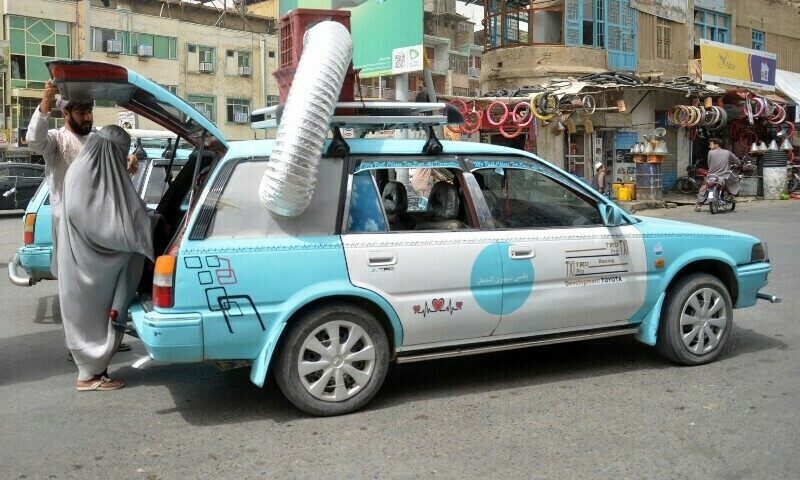Creative Solutions for Extreme Heat in Afghanistan
In the sweltering heat of summer, where temperatures often soar above 40 degrees Celsius, taxi drivers in southern Afghanistan have found a unique and affordable way to stay cool. In Kandahar, one of the region’s major cities, many blue taxis now feature homemade cooling units installed on their rooftops. These makeshift systems are a testament to the ingenuity of local mechanics and drivers who are adapting to harsh environmental conditions.
According to reports, these cooling units are crafted by local technicians using available materials. The system is connected to the car’s battery and uses window-mounted exhaust pipes to circulate cool air inside the vehicle. This innovation has become a popular solution for drivers who cannot afford to repair or replace their original air conditioning systems.
Gul Mohammad, a 32-year-old driver, shared his experience with the system. He explained that he couldn’t afford to fix his car’s AC, so he opted for a custom-built cooler instead. For around 3,000 Afghanis (approximately $43), he had a unit installed that he keeps running by regularly adding water. This simple yet effective solution has made a significant difference in his daily commute.
Another driver, Abdul Bari, claimed that the cooler works even better than the built-in AC. “The car AC only cools the front,” he said, “but this spreads air throughout the entire car.” His experience highlights the practical benefits of these rooftop units, which provide more even and efficient cooling compared to traditional systems.
Some drivers have taken the concept a step further by integrating solar panels into their cooling systems. By connecting the units to solar panels mounted on the taxi roofs, they are able to save energy and reduce their reliance on the car’s battery. This combination of technology and sustainability demonstrates how individuals are finding ways to adapt to the challenges posed by climate change.
Murtaza, a 21-year-old technician, noted that the demand for these rooftop coolers has increased significantly in recent years. He explained that many cars in the area did not originally come equipped with air conditioning. As a result, his workshop has seen a growing number of requests for these cooling systems. From his small workshop in the city center, Murtaza has been helping drivers find practical solutions to stay comfortable during the hottest months of the year.
Afghanistan, one of the poorest countries globally, faces increasing challenges due to climate change. The country frequently experiences extreme heat waves and prolonged droughts, making it one of the most vulnerable regions to environmental shifts. With many vehicles being older models imported from neighboring countries, the need for cost-effective and locally developed solutions has never been greater.
These rooftop cooling systems represent more than just a practical response to rising temperatures. They symbolize the resilience and creativity of ordinary people who are finding ways to cope with an unpredictable and changing climate. As global temperatures continue to rise, such grassroots innovations may play an important role in shaping future approaches to sustainable living in regions affected by extreme weather conditions.
Local mechanics and drivers are proving that even in the face of adversity, there is always room for innovation. Their efforts highlight the importance of community-driven solutions in addressing the growing impact of climate change. As more people adopt similar strategies, the potential for widespread adaptation and resilience becomes increasingly evident.







